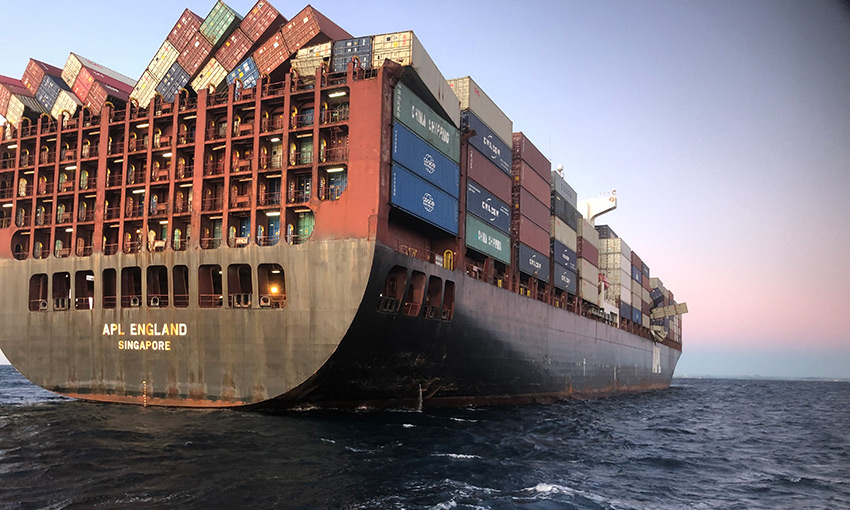A PRELIMINARY investigation report into the APL England incident has revealed the ship was rolling and pitching heavily when it lost 50 containers overboard south-east of Sydney in late May.
The preliminary report sets out the incident’s events and outlines that as the APL England travelled down the east coast, the Bureau of Meteorology issued regular forecasts regarding a low-pressure system with gale force wind warnings.
The report details that the crew restarted the engine, by which time the ship had turned to port, beam on to the seas, while continuing to roll heavily.
The ship slowly gathered speed, and was turned easterly and then southerly, into the weather, before the crew then decided to head north, with the weather.
“It was not until skies had lightened – sunrise was at 0647 – that the chief officer first noticed the fallen stacks of containers,” ATSB commissioner Greg Hood said.
“It was later established that 50 containers had been lost overboard from both forward and aft bays.”
Mr Hood said one container lost overboard contained hazardous goods in the form of dry powder fire extinguishers, while 23 containers were empty.
A further 63 containers were damaged but remained on board.
The ship sailed to Brisbane where ATSB transport safety investigators went on board to survey the damaged container stacks.
“Generally, the ship’s lashing equipment appeared in good condition. However, many of the ship fittings including lashing eyes, lashing bridges and deck structures were found to be heavily corroded and wasted,” Mr Hood said.
Mr Hood said the preliminary report did not include any safety findings or analysis.
“The on-going investigation will review and analyse several areas of interest including the ship’s container stow and lashing arrangement; the maintenance regimes for the ship’s deck and engine room; the ship’s service and inspection history; the ship’s stability condition; weather conditions and information provided to crew; and the actions of the ship’s crew,” he said.
A final report is to be released at the end of the investigation.

